
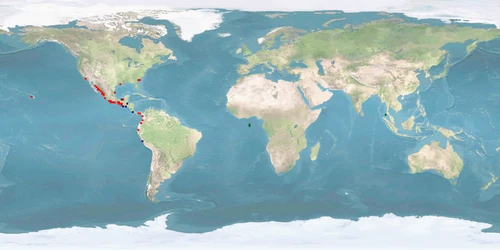
Information
Authors: Jenny Volstorf, Ana Roque
Version: B | 1.2Published: 2023-07-26
link corrections
1 Summary
2 General
Note of dissent:
The second author found no evidence to include the Whiteleg shrimp in a group of animals which have the capacity to suffer. Nevertheless there is a growing body of literature addressing this issue in crabs which show that crabs may feel pain, have a capacity to learn and have memory D1. The second author who is not a strict follower of the precautionary approach agreed to write these recommendations as if Whiteleg shrimp were indeed eligible for welfare protection, even though this is an approach that is not supported by the scientific literature currently available D1.
The editor and the first author do not agree with the insular argument to consider animal welfare only in species for which the capacity to suffer has been proven. They insist upon a wider concept of animal welfare according to the Swiss law for animal protection which respects the dignity of living beings and their integrity independent of suffering.
It is obvious that the welfare of Whiteleg shrimp has not been a serious focus of research yet. And even if one sticks to the suffering paradigm it is probable enough that in Whiteleg shrimp, too, the capability to suffer will be proven some day D1. Thus the best recommendation to be made to shrimp farmers is to prepare for it →fair-fish database's understanding of fish welfare.
- Escapes: rear only in environments where it naturally occurs D2 and prevent escapes. Else, escapees from shrimp farms have negative or at most unpredictable influences on the local ecosystem D3. Take care not to release individuals into the wild during pond cleaning (disease infections, water exchange, harvest) or floods. Prepare for sexual maturity (and thus spawning) from 6.5 months or 18-22 g on for males and 8.5 months or 21-28 g on for females D4 and take measures against spawning into the wild.
3 Designing the (artificial) habitat
3.1 Substrate and/or shelter
- Substrate:
- Substrate: in the wild, lives over sand and mud D5. For the most natural solution, provide sand and mud; alternatively, provide artificial sand preferably in yellow or red D6, as these colours might also benefit growth – although this could also be an effect of better contrast to dark food pellets D7. Sediment layer on artificial substrate (aquamats, geotextile fabric, mosquito nets, polyethylene screens) increases growth by increasing periphyton and/or decreasing stocking density D8.
- For substrate and occupation → A1.
- Shelter or cover:
- Cover: avoid complete cover of the tank or pond of a) post-larvae because of lower ingestion rate D9 and b) juveniles because of lower growth and possibly lower survival D10. Further research needed.
- Vegetation: no ethology-based recommendation definable so far.
- Shelters: juveniles like to burrow during the day D11. Provide sand to allow for burrowing (→ Substrate); alternatively, provide artificial shelters inside the system or outside.
3.2 Photoperiod
- Photoperiod: given the distribution D2 D12, natural photoperiod is 10-14 hours, depending on the season. Provide access to natural (or at least simulated) photoperiod and daylight. Keeping Whiteleg shrimp under 24 hours scotoperiod decreases growth and might increase mortality D10. Further research needed.
- Light intensity: although lighting regimes like "1,500 lux light intensity on six consecutive days and abrupt change to 60 lux for two days; repeat the cycle" or "24 hours 10,000 lux" D10 yield growth in juveniles, refrain from it, as we have not found studies reporting possible long-term effects on welfare → fair-fish database's understanding of fish welfare. Also, long photoperiod could contribute to growth rather because of chlorophyll-a serving as additional food source; light alone does not seem sufficient to influence growth D10. Further research needed.
In juveniles, under laboratory conditions, tendency of best growth under metal halide lamp emitting 2,500 lux shining only day D10. This regime resulted in the highest free astaxanthin concentration responsible for body colour, though, indicating that astaxanthin protects against damage from intense light D13. An incandescent light emitting 450 lux at most yielded low astaxanthin concentrations D13, thereby seemingly most protective while preventing complete darkness. Further research needed. - Light colour: no ethology-based recommendation definable so far.
- Resting period: allow Whiteleg shrimp a resting period at night or in the dark D11.
3.3 Water parameters
- Temperature: no clear temperature preference, probably best kept at 26-30 °C D14 D15. Above and below may mean lower survial D16 and growth D15. Adjust temperature when you notice avoidance behaviour D17 D18. Implemented in aquaculture, temperatures >22 °C demand excellent oxygen levels D19 and a fine-tuned flow-through system to prevent bacterial load.
- Water velocity: no ethology-based recommendation definable so far.
- Oxygen: in the wild, oxygen level is at 0.7-13.3 mg/L D19. Further research needed. Maintain oxygen level that ensures welfare depending on temperature (→ Temperature) and stocking density (→ A2).
- Salinity: given the amphidromous migration type, natural salinity is at seawater level at hatching and again from juvenile stage on, brackish water level from post-larvae to sub-adult stage D20 D21. Tolerance towards salinity has a bell-shaped curve, so do not expose newly-hatched or adult individuals to very low or very high salinities and to large salinity changes D22. Generally, prefer gradual (instead of abrupt) salinity change D22 and avoid large salinity fluctuations of ±15‰ D23. The best salinity level for optimal growth depends on the acclimation salinity, water temperature, and water hardness D23.
- pH: in the wild, ph is at 6.0-8.0 D24. For the most natural solution, maintain this range. Further research needed.
- Turbidity: no ethology-based recommendation definable so far.
3.4 Swimming space (distance, depth)
- Distance: no ethology-based recommendation definable so far. Provide enough space, bearing in mind the planned stocking density A2.
- Depth:
- Depth range: in the wild, juveniles are found at <1 m, adults at 10-20 m D25. Provide at least 1 m for juveniles, ideally up to 20 m for adults, bearing in mind the planned stocking density A2.
- Flight: no ethology-based recommendation definable so far.
- Temperature layers: in habitats with water layers with different temperatures, prepare for individuals migrating to layers with preferred temperatures D14, and avoid crowding in these layers by providing enough space.
4 Feeding
- Alternative species: omnivorous D26, trophic level 2.0-3.0 D27. If you have not yet established a Whiteleg shrimp farm, you might consider to opt for a species that can be fed without or with even less fish meal and fish oil in order not to contribute to overfishing by your business D28.
- Protein substitution: if you run a Whitleg shrimp farm already, try to substitute protein feed components that have so far been derived from wild fish catch, while taking care to provide your shrimps with a species-appropriate feed D26:
- Invite a feed mill and other shrimp farmers in your country to jointly establish a recycling syndicate that converts the remainders and the offcuts of fish processing into fish meal and fish oil, separating the production line corresponding to the species of origin in order to avoid cannibalism →fair-fish farm directives (point 6).
- Inform yourself about commercially tested substitutes for fish meal and fish oil, like insect or worm meal or soy, with an appropriate amino and fatty acid spectrum.
Note of dissent:
The second author disagrees with this recommendation which to her opinion has to do with overfishing and ethics but not with animal welfare.
The editor and the first author adhere to the recommendation above because overfishing impairs the marine food chain and consequently the living of marine animals, thus animal welfare, not to speak of about 450,000,000,000-1,000,000,000,000 fishes caught for feed annually.
- Feed delivery:
- Feeding frequency and time, feed delivery, self-feeders: in the wild, probably bottom grazer or active fighter D29. Some evidence of nocturnal feeding pattern D11. If only diurnal feeding times are possible, make sure nocturnal individuals do not starve by closely monitoring individual weights. Alternatively, install a self-feeder and make sure all Whiteleg shrimp adapt to it. No ethology-based recommendation definable so far on feeding frequency as well as speed and pattern of feed delivery. Note decreased feeding in juveniles during days 1.5-3 and 14-21 of the moulting cycle and at temperatures of 20 °C D17 and reduce the amount of food offered accordingly (if not using a self-feeder).
- Food competition: make sure to provide sufficient feed from ca 38 hours after hatching on D30. Large individuals and especially males do feed more often and longer, but females are still heavier D31, so size-grading might not be beneficial.
- Particle size: for juveniles, provide particle sizes of ca 2.2-2.6 mm; larger particle size results in food competition and probably death of smaller individuals D26.
- Feed enrichment: to improve metabolic parameters, provide natural food (bacteria, microalgae) in seawater by using 15 μm (instead of smaller) filters D32. For lower mortality and better stress resistance, enrich feed with highly unsaturated fatty acids D32.
5 Growth
- Maturity: in farms, males mature from ca 6.5 months, females from ca 8.5 months on D4. Even if manipulating time of maturity were possible, refrain from it, as we have not found studies reporting possible long-term effects on welfare → fair-fish database's understanding of fish welfare.
- Manipulating sex: even if manipulating sex were possible, refrain from it, as we have not found studies reporting possible long-term effects on welfare → fair-fish database's understanding of fish welfare.
- Sex ratio: no ethology-based recommendation definable so far. Although females grow bigger and heavier than males D33, refrain from monosex (female-only) groups, as we have not found studies reporting possible long-term effects on welfare → fair-fish database's understanding of fish welfare.
- Size-grading: for size-grading and food competition →A3.
- Other effects on growth:
- Lunar cycle: possibly best growth at full and new moon D34. Further research needed.
- Deformities and malformations: no ethology-based recommendation definable so far.
- For growth and...
...substrate →A4,
...substrate colour →A4,
...photoperiod →A5,
...light intensity →A5,
...water temperature →A6,
...salinity →A6,
...particle size →A3
...stocking density →A2.
6 Reproduction
- Nest building: sea spawner D35.
- Courtship, mating: respect courtship and mating behaviour in which male chases, turns, and grasps the female D36. Allow for touch or mechanical communication respectively D36 as well as pair bond if individuals display monogamy D36.
- Spawning conditions: respect natural spawning condition in seawater D21 and spawning sequence in which male spawns at mating, female 2-5 hours later D37. No ethology-based recommendation definable on spawning season, water temperature, salinity, water velocity, and depth. Successful spawning has been achieved in male:female ratios of 1:1 to 6:1 D38. Further research needed for wild ratios. Note that wild-caught females mate more frequently than captive ones, but because using wild-caught individuals is not ecologically sustainable, there is no recommendable rearing method at the moment D39.
- Fecundity: intact/non-ablated females spawn about 30,000-80,000 eggs per mating D40. Further research needed for fecundity in the wild. Note the difference in fecundity and consider non- or low-spawning females when estimating productivity of broodstock and refrain from discarding broodstocks altogether. Note that wild-caught females have higher fecundity and more viable spawn than captive ones, but because using wild-caught individuals is not ecologically sustainable, there is no recommendable rearing method at the moment D41. Serotonine injection and temperature manipulation for prolonging the spawning period of females to off-season does not yield fecundity, fertilisation, and hatching rates different from – at times even lower than – the control condition D41. Further research needed. Although unilateral eyestalk ablation increases fecundity D40, refrain from it, as it decreases hatching rate D42, is painful D43, a profound invasion into the integrity and dignity of the individual, and because we have not found studies reporting possible long-term effects on welfare →fair-fish database's understanding of fish welfare.
In the wild, males spawn 50,000-29,310,000 sperms per spermatophore D44. Note the difference in fecundity and consider non- or low-spawning males when estimating productivity of broodstock and refrain from discarding broodstocks altogether. Although unilateral eyestalk ablation increases fecundity D44 and spermatophore weight D41, refrain from it, as it is painful D43, a profound invasion into the integrity and dignity of the individual, and we have not found studies reporting possible long-term effects on welfare →fair-fish database's understanding of fish welfare. Refrain from bilateral ablation in males, as it is painful D43, stressful D45, a profound invasion into the integrity and dignity of the individual, and increases mortality D41.
7 Stocking density
- Maximum: the businessplan should be calculated on the basis of a maximum stocking density that will never exceed the tolerable maximum with regard to shrimp welfare.
- Stocking:
- Stocking larvae: no ethology-based recommendation definable so far.
- Stocking juveniles and adults: in the wild, densities of 0.001-0.3 individuals/m2, up to 4-5 individuals/m2 in the rainy season D46. For better survival and growth, keep at <50 individuals/m2 D47 D48. To determine stocking density in tanks, do not consider bottom plus walls (m3), because Whiteleg shrimp cannot stick to smooth walls. Consider useful surface area (m2) instead – bottom plus substrate D8.
For artificial substrate to decrease stocking density and stress → A4.
- Restriction:
- Habitat structuring: consider loss of space due to structures inside and outside the system A4 and calculate density accordingly.
- Environmental conditions: in the wild, displays a large variability in preferences for water temperature D14 and depth D25. Consider increased density at places with preferential conditions A6 A7 and calculate density accordingly.
- Aggregation: in farms, individuals build schools D49. Consider increased density at places due to formation of schools and calculate density accordingly.
- Aggression: no ethology-based recommendation definable so far.
- Territoriality: no ethology-based recommendation definable so far.
- Interaction: as show the above influence factors, stocking density is only one part of a complex interaction of factors to affect welfare. It should never be considered isolatedly.
8 Occupation
- Food search: provide sand and mud and/or artificial substrate (→ A4) so that individuals may search for food D5 D29.
- Challenges: if after decreasing stress A8 and providing everything welfare assuring, you still notice stereotypical behaviour, vacuum activities, sadness, then provide mental challenges, diversion, variety, and check reactions.
9 Handling, slaughter
9.1 Handling
- Stress coping styles: individuals differ in their ability to cope with stress D45, so assume the smallest common denominator during stressful situations and handle with care and high efficiency.
- Stress measurement:
- Physiological stress indicators: hemolymph glucose exceeding 5.8-16.7 mg/mL D50 D51 D52 D45, hemolymph lactate exceeding 3-5.7 mg/dL D50 D51, proteins in hemolymph <75.0-90.5 mg/dL D51, haemocyanin <82.9-96.2 mg/mL D50 D52 indicates stress. For acute stress measurement, prefer glucose, for chronic stress measurement, prefer lactate and proteins (among others) in hemolymph D52.
- Abnormal behaviour: after, e.g., changing parameters, check for behaviour deviating from the norm D29 D11 D53 D25 D54 D33 D36 D40 D44 D35 D49 D55. Recoiling indicates pain D43.
- Stress reduction:
- Noise: no ethology-based recommendation definable so far.
- Directing individuals: to direct individuals in the habitat (e.g., for cleaning purposes or to separate moulting from non-moulting individuals), make use of stark light contrasts to reduce stress D56.
- Cage submergence: does not apply.
- Pain treatment: applying an anaesthetic beforehand and a coagulating agent after a treatment decreases the reactions shown otherwise D57.
- Handling: handle as carefully as possible and avoid repeated handling (e.g., every day), as it causes stress D50 D52. Especially in newly moulted juveniles, stress will increase mortality D52. Avoid bilateral ablation in males, as it causes disorientation and increases mortality D45.
- Confinement: avoid confinement, as it causes stress D51. If unavoidable, after confinement and chasing of one minute, let recuperate for at least two hours D51.
- Crowding: no ethology-based recommendation definable so far.
- Transport: no ethology-based recommendation definable so far.
- Disturbance: no ethology-based recommendation definable so far.
- For stress reduction and...
...cover → A4,
...water temperature → A6,
...salinity → A6,
...particle size → A3,
...ablation → A9,
...stocking density → A2,
...stunning → A10.
9.2 Slaughter
- Stunning rules: render individuals unconscious as fast as possible and make sure stunning worked and they cannot recover D58.
- Stunning methods: prefer electrical stunning, because it renders individuals unconscious fast if administered correctly and with appropriate current D59. "Crustastun", in particular, effectively stuns and potentially kills decapods like crabs and lobsters with minimal handling and stress involved D59. Possibility of epileptic phase, though D59. Further research needed to determine whether crustastunning may be applied to Whiteleg shrimp as well and for a specific protocol.
- Slaughter methods: behead individuals immediately after stunning, i.e. while unconscious.
10 Certification
- Certification: fair-fish international association warmly advises to follow one of the established certification schemes in aquaculture in order to improve the sustainability of aquafarming. Adhering to the principles of one of these schemes, however, does not result in animal welfare by itself, because all these schemes do not treat animal welfare as a core issue or as an issue at all. Therefore the FishEthoBase has been designed as a complement to any of the established certification schemes. May it help practitioners to improve the living of the animals they farm based on best scientific evidence at hand.
- To give you a short overview of the most established schemes, we present them below in descending order of their attention for animal welfare (which is not necessarily the order of their sustainability performance):
- The fair-fish farm directives are not present on the market, we cite them here as a benchmark. The directives address fish welfare directly by being committed to FishEthoBase: for each species, specific guidelines are to be developed mirroring the recommendations of FishEthoBase; species not yet described by FishEthoBase cannot be certified. In addition, the directives address a solution path for the problem of species-appropriate feeding without contributing to overfishing.
- The Naturland Standards for Organic Aquaculture (Version 06/2018) generally address animal welfare with words similar to the fair-fish approach: "The husbandry conditions must take the specific needs of each species into account as far as possible (…) and enable the animal to behave in a way natural to the species; this refers, in particular, to behavioural needs regarding movement, resting and feeding as well as social and reproduction habits. The husbandry systems shall be designed in this respect, e.g. with regard to stocking density, soil, shelter, shade and flow conditions".
In the details, however, the standards scarcely indicate tangible directives the only ones for shrimps in general kept in ponds being: provide substrate enlarging the surface and being suitable for growth of benthic algae or diatoms, stocking density limited to 15 post-larvae/m2 max and 1,600 kg/ha in ponds. - The GAA-BAP Finfish and Crustacean Farms Standard (Issue 2, September 2014) directly addresses animal welfare: "Producers shall demonstrate that all operations on farms are designed and operated with animal welfare in mind." Farms shall "provide well-designed facilities", "minimize stressful situations" and train staff "to provide appropriate levels of husbandry". Yet the standard does not provide tangible and detailed instructions for the practitioner, let alone species-specific directives.
In September 2017, GAA-BAP received a grant from the Open Philanthropy Project to develop best practices and proposed animal welfare standards for salmonids, tilapia, and channel catfish. Thus, fish welfare on GAA-BAP certified farms might become more tangible in the future, eventually also for Pacific whitelg shrimp at a later date. - The GlobalG.A.P. Aquaculture Standard (Version 4.0, March 2013) "sets criteria for legal compliance, for food safety, worker occupational health and safety, animal welfare, and environmental and ecological care". The inspection form includes criteria like "Is the farm management able to explain how they fulfil their legal obligations with respect to animal welfare?", "If brood fish are stripped, this should be done with the consideration of the animal's welfare." or "Is a risk assessment for animal welfare undertaken?". The scheme claims that 45 out of a total of 249 control points cover animal protection, yet it does not provide any tangible directives, let alone species-specific directives.
- The ASC Aquaculture Stewardship Council. The ASC standards address fish welfare only indirectly, as a function of a “minimum average growth rate" per day, a "maximum fish density at any time", and a "maximum average real percentage mortality". fair-fish sees animal welfare as an intrinsic value, not just as a result of optimising neighbouring values like health care and management procedures.
The ASC standard for Shrimps (version 1.1, March 2019) specifies threshold values for survival rates, but not for stocking density and growth rate.
In November 2017, ASC received a grant from the Open Philanthropy Project to develop an evidence-based fish welfare standard that is applicable to all ASC-certified species. ASC intends to share its approach to fish welfare with all farms engaged with the ASC program and encourage adoption of it, which means that the fish welfare standard will function as a non-mandatory add-on to the ASC certification. - The Friend of the Sea (FOS) Standards for farmed crustaceans (revised May 2016) do not even address animal health or animal welfare issues.
In May 2017 however, FOS signed a Memory of Understanding with fair-fish international on developing fish welfare criteria for the FOS standard. In November 2017 fair-fish international association received a grant from the Open Philanthropy Project to assess the welfare of fish on FOS certified farms, develop farm-specific recommendations, and to develop animal welfare criteria for the FOS standard. Thus, fish welfare on FOS certified farms might become tangible in the future.
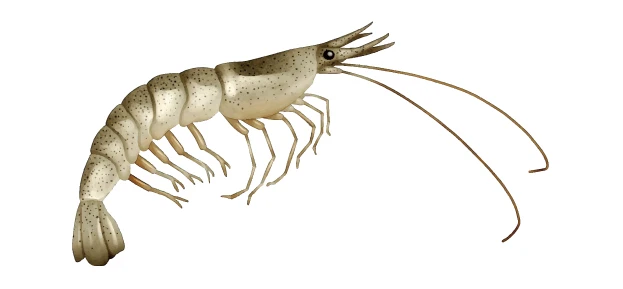
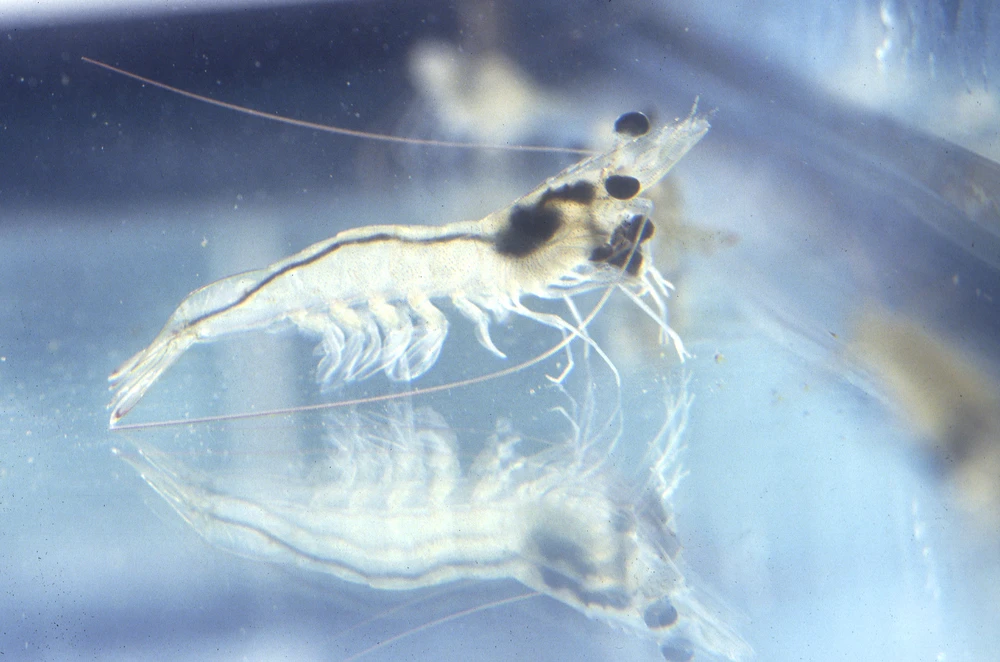
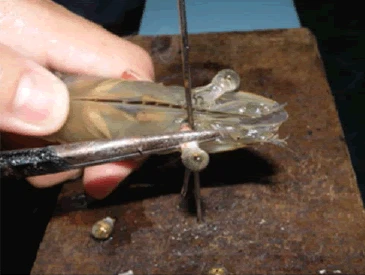
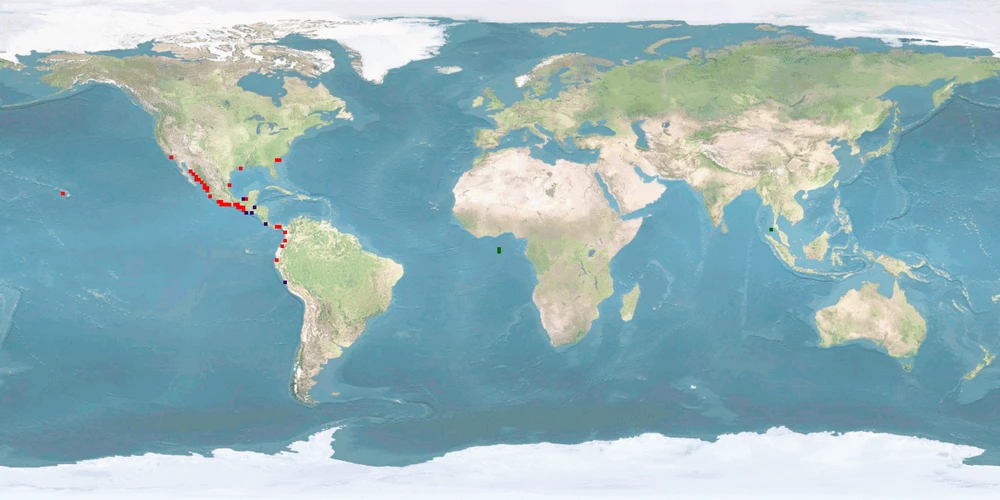




In the "Advice", we summarise findings from the literature regarding some basic criteria that are important to assure good welfare in aquaculture facilities: designing the (artificial) habitat, feeding, growth, reproduction, stocking density, occupation, handling/slaughter. The literature base comes from the "Dossier" (separate tab on top) where one may also find the respective references.
At first sight, the "Advice" might read as something resembling a farming manual, but we would like to stress that it's not meant like this. Yes, we do our best to give the insights from the literature with the aim of assuring good welfare in aquaculture. There are two reasons why the "Advice" is not a rearing manual:
- to set up or maintain an aquaculture facility, many more criteria are important to know and monitor. For example, we do not cover water parameters in detail
- our source for everything on this page is an – albeit vast – literature check. We did not consult with aquaculture experts or got hands-on knowledge ourselves. Some of the studies were done in the lab, though, and might need to be verified for the farming context.
In sum, our idea with the "Advice" is to summarise what the literature has to say about how to assure good welfare in aquaculture. Please also note that the "Advice" is a part of the database that we put on hold a few years ago to focus more on the WelfareChecks. Therefore, all of the 11 "Advices" (2013-2019) certainly need an update.
Probably, we updated the profile. Check the version number in the head of the page. For more information on the version, see the FAQ about this. Why do we update profiles? Not just do we want to include new research that has come out, but we are continuously developing the database itself. For example, we changed the structure of entries in criteria or we added explanations for scores in the WelfareCheck | farm. And we are always refining our scoring rules.
The centre of the Overview is an array of criteria covering basic features and behaviours of the species. Each of this information comes from our literature search on the species. If we researched a full Dossier on the species, probably all criteria in the Overview will be covered and thus filled. This was our way to go when we first set up the database.
Because Dossiers are time consuming to research, we switched to focusing on WelfareChecks. These are much shorter profiles covering just 10 criteria we deemed important when it comes to behaviour and welfare in aquaculture (and lately fisheries, too). Also, WelfareChecks contain the assessment of the welfare potential of a species which has become the main feature of the fair-fish database over time. Because WelfareChecks do not cover as many criteria as a Dossier, we don't have the information to fill all blanks in the Overview, as this information is "not investigated by us yet".
Our long-term goal is to go back to researching Dossiers for all species covered in the fair-fish database once we set up WelfareChecks for each of them. If you would like to support us financially with this, please get in touch at ffdb@fair-fish.net
See the question "What does "not investigated by us yet" mean?". In short, if we have not had a look in the literature - or in other words, if we have not investigated a criterion - we cannot know the data. If we have already checked the literature on a criterion and could not find anything, it is "no data found yet". You spotted a "no data found yet" where you know data exists? Get in touch with us at ffdb@fair-fish.net!
First up, you will find answers to questions for the specific page you are on. Scrolling down in the FAQ window, there are also answers to more general questions. Explore our website and the other sub pages and find there the answers to questions relevant for those pages.
In the fair-fish database, when you have chosen a species (either by searching in the search bar or in the species tree), the landing page is an Overview, introducing the most important information to know about the species that we have come across during our literatures search, including common names, images, distribution, habitat and growth characteristics, swimming aspects, reproduction, social behaviour but also handling details. To dive deeper, visit the Dossier where we collect all available ethological findings (and more) on the most important aspects during the life course, both biologically and concerning the habitat. In contrast to the Overview, we present the findings in more detail citing the scientific references.
Depending on whether the species is farmed or wild caught, you will be interested in different branches of the database.
Farm branch
Founded in 2013, the farm branch of the fair-fish database focuses on farmed aquatic species.
Catch branch
Founded in 2022, the catch branch of the fair-fish database focuses on wild-caught aquatic species.
The heart of the farm branch of the fair-fish database is the welfare assessment – or WelfareCheck | farm – resulting in the WelfareScore | farm for each species. The WelfareCheck | farm is a condensed assessment of the species' likelihood and potential for good welfare in aquaculture, based on welfare-related findings for 10 crucial criteria (home range, depth range, migration, reproduction, aggregation, aggression, substrate, stress, malformations, slaughter).
For those species with a Dossier, we conclude to-be-preferred farming conditions in the Advice | farm. They are not meant to be as detailed as a rearing manual but instead, challenge current farming standards and often take the form of what not to do.
In parallel to farm, the main element of the catch branch of the fair-fish database is the welfare assessment – or WelfareCheck | catch – with the WelfareScore | catch for each species caught with a specific catching method. The WelfareCheck | catch, too, is a condensed assessment of the species' likelihood and potential for good welfare – or better yet avoidance of decrease of good welfare – this time in fisheries. We base this on findings on welfare hazards in 10 steps along the catching process (prospection, setting, catching, emersion, release from gear, bycatch avoidance, sorting, discarding, storing, slaughter).
In contrast to the farm profiles, in the catch branch we assess the welfare separately for each method that the focus species is caught with. In the case of a species exclusively caught with one method, there will be one WelfareCheck, whereas in other species, there will be as many WelfareChecks as there are methods to catch the species with.
Summarising our findings of all WelfareChecks | catch for one species in Advice | catch, we conclude which catching method is the least welfare threatening for this species and which changes to the gear or the catching process will potentially result in improvements of welfare.
Welfare of aquatic species is at the heart of the fair-fish database. In our definition of welfare, we follow Broom (1986): “The welfare of an individual is its state as regards its attempts to cope with its environment.” Thus, welfare may be perceived as a continuum on which an individual rates “good” or “poor” or everything in between.
We pursue what could be called a combination of not only a) valuing the freedom from injuries and stress (function-based approach) but b) supporting attempts to provide rewarding experiences and cognitive challenges (feelings-based approach) as well as c) arguing for enclosures that mimic the wild habitat as best as possible and allow for natural behaviour (nature-based approach).
Try mousing over the element you are interested in - oftentimes you will find explanations this way. If not, there will be FAQ on many of the sub-pages with answers to questions that apply to the respective sub-page. If your question is not among those, contact us at ffdb@fair-fish.net.
It's right here! We decided to re-name it to fair-fish database for several reasons. The database has grown beyond dealing purely with ethology, more towards welfare in general – and so much more. Also, the partners fair-fish and FishEthoGroup decided to re-organise their partnership. While maintaining our friendship, we also desire for greater independence. So, the name "fair-fish database" establishes it as a fair-fish endeavour.
